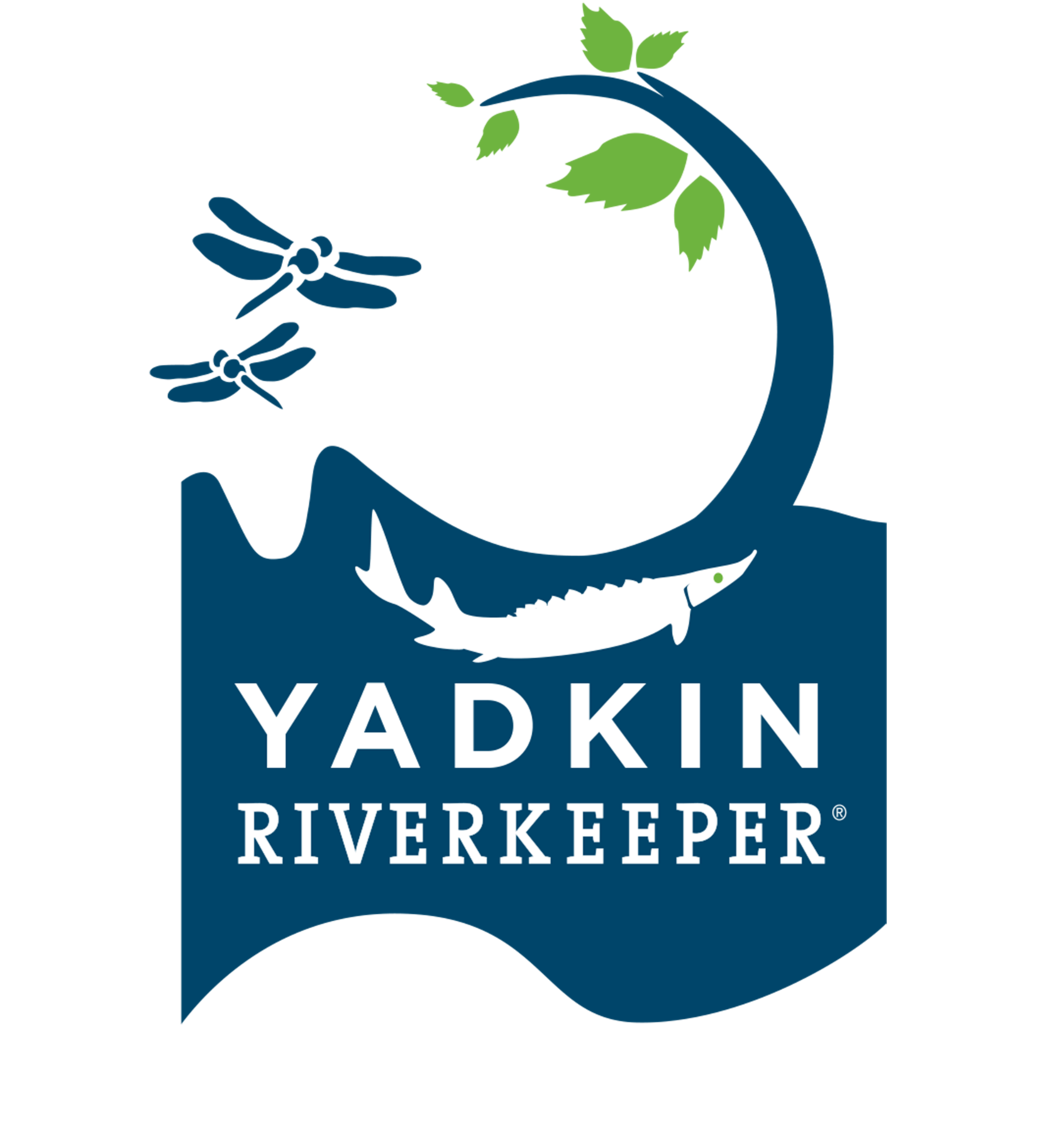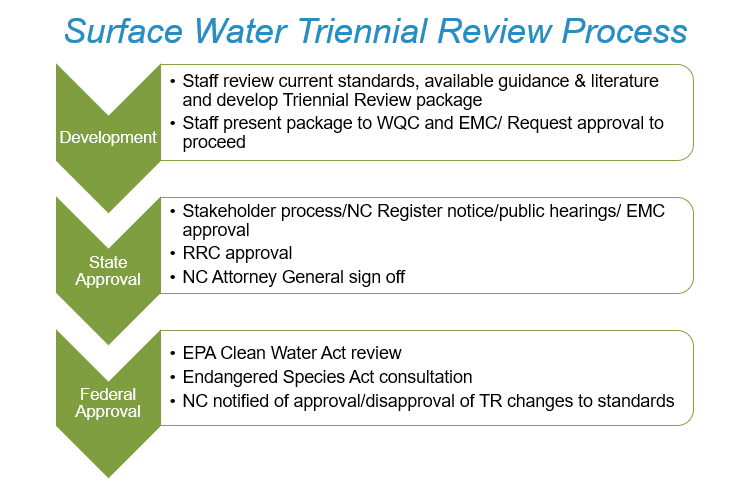The upcoming 2020-22 Triennial Review of North Carolina’s water quality standards conducted by the NC Department of Environmental Quality (DEQ) and the NC Environmental Management Commission (EMC) will be a major focus for Yadkin Riverkeeper in the last half of 2020 and most likely well in to 2021. The Triennial Review is the state regulatory agency’s periodic assessment of existing and proposed water quality standards, including many of YRK’s priorities.
These priorities include establishing a chlorophyll-a standard and nutrient criteria for High Rock Lake, adopting EPA guidelines for cyanotoxins cause by Harmful Algal Blooms (HABs) and addressing growing concerns with polyfluoroalkyl substances (PFAS/PFOS) sometimes referred to “emerging contaminants” or “forever chemicals.”
Part of the review will focus on the recent recommendations proposed by the NC Science Advisory Committee in their June 2020 report titled, “A Chlorophyll a Criterion for High Rock Lake.” The recommended standard would be an average of chlorophyll-a levels lake wide of 35 micrograms/L, compared to the current state standard for impairment of 40 micrograms/liter. If adopted, the new standard for HRL would provide a warning sign for potential HABs that will help protect humans and pets who frequent the lake.
By establishing a chlorophyll-a standard for HRL, YRK will be able to leverage nutrient pollution reductions upstream for wastewater treatment plants, agricultural runoff and stormwater. In addition, the proposed chlorophyll-a standard for HRL and the scientific analysis behind it will be considered a precedent for future standards in other North Carolina waterbodies.
In terms of nutrient criteria development, the review will look to formulate and adopt criteria for numeric nutrient standards for both nitrogen and phosphorous. The US EPA has proposed guidance on developing numeric criteria for establishing nutrient standards for lakes, which the state is currently assessing and determining their applicability to NC. Excessive nutrients and rising water temperatures can lead to algal blooms that can potentially produce harmful cyanobacteria, which can produce cyanotoxins. The review will hopefully result in the adoption EPA water quality guidelines for common cyanotoxins found in NC rivers and lakes to protect humans, as well as pets and wildlife from their harmful effects.
YRK has created a fact sheet about HABs to help educate the public and answer frequently asked questions. HABs are a growing concern in North Carolina, and the algal bloom that occurred on the Abbotts Creek arm of High Rock Lake in June 2020 has proven to be a good case study in how the state responds to potential HABs. The HAB fact sheet is a useful reference and provides important information on how to identify HABs and protect family members or a pet from coming into contact with a potential HAB. The fact sheet can be found here, and is applicable to all of North Carolina’s watersheds.
Lastly, YRK along with other Riverkeeper organizations across the state, will be pushing the EMC to establish ambient water quality standards for PFAS, which are harmful industrial, manmade chemicals used in the production of a wide variety of products. While they are often discharged into waterbodies and groundwater by industrial plants, such as the Gen-X compound used in making non-stick cookware released by the Chemours plant on the Cape Fear River, they are also ubiquitous in commerce with more than 5,000 known PFAS. They are currently used in everything from fire suppressant foam, to carpet and clothing.
A recent study by aquatic ecologists at NC State University found 14 different PFAS in the Yadkin Pee Dee River. Fortunately most of those levels are well below EPA’s recommended water quality guidelines to protect public health, but we are concerned with the study’s conclusion that the PFAS are bioaccumulating in the food chain, which we hope will lead the state to adopt a more restrictive standard than EPA to protect the health of the River’s aquatic ecosystem and fishery, not to mention drinking water.
This will be my last month with YRK as a Stanback Fellow, I would like to thank Edgar and the entire YRK staff for the guidance and experience they afforded me over the course of this summer. It has been a privilege to work to help serve the communities that lie within the Yadkin watershed, and I am proud of the work we have done during my time and the work that YRK will continue to do now and in the future.
Trey Bender, YRK Stanback Fellow

